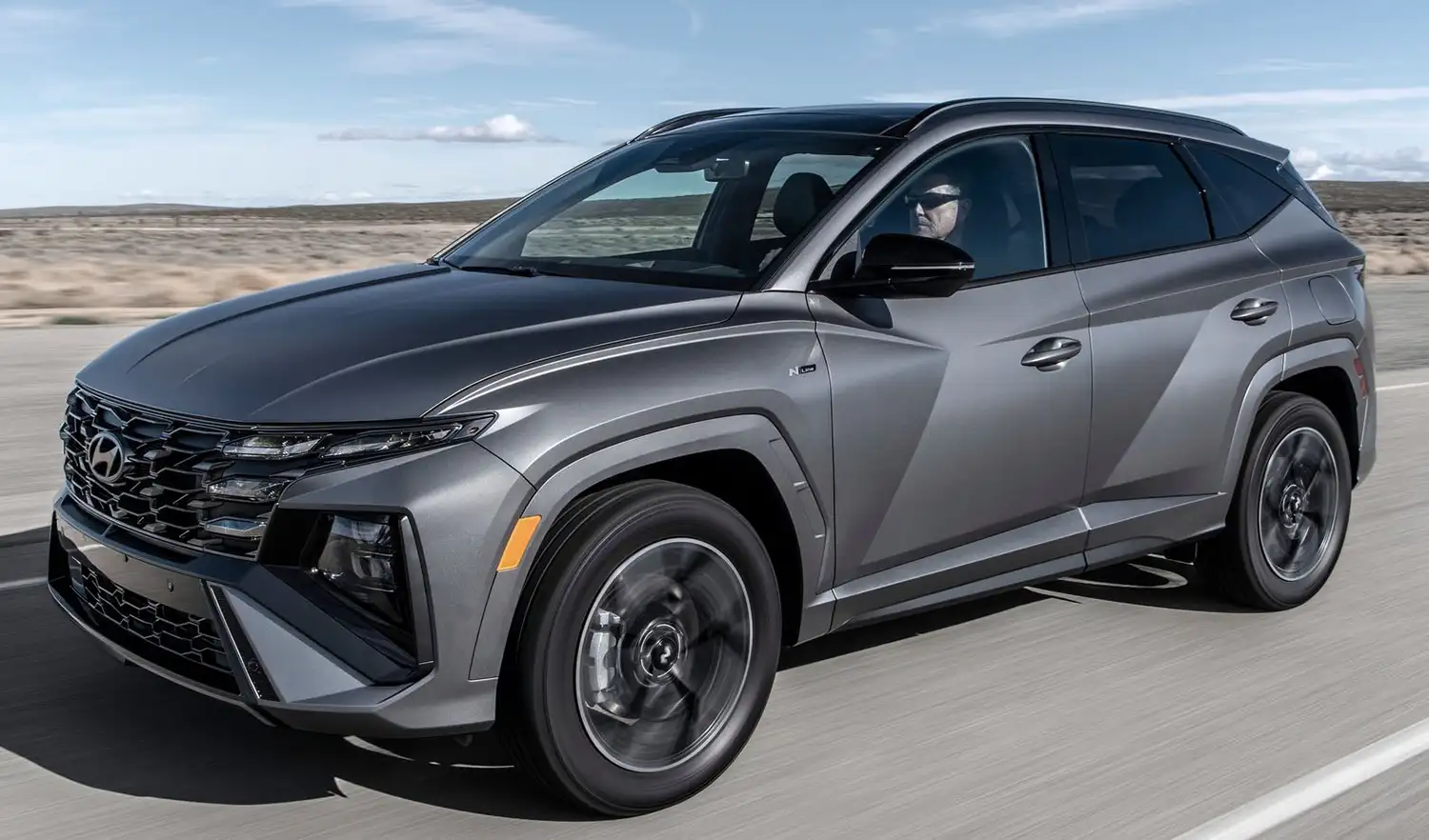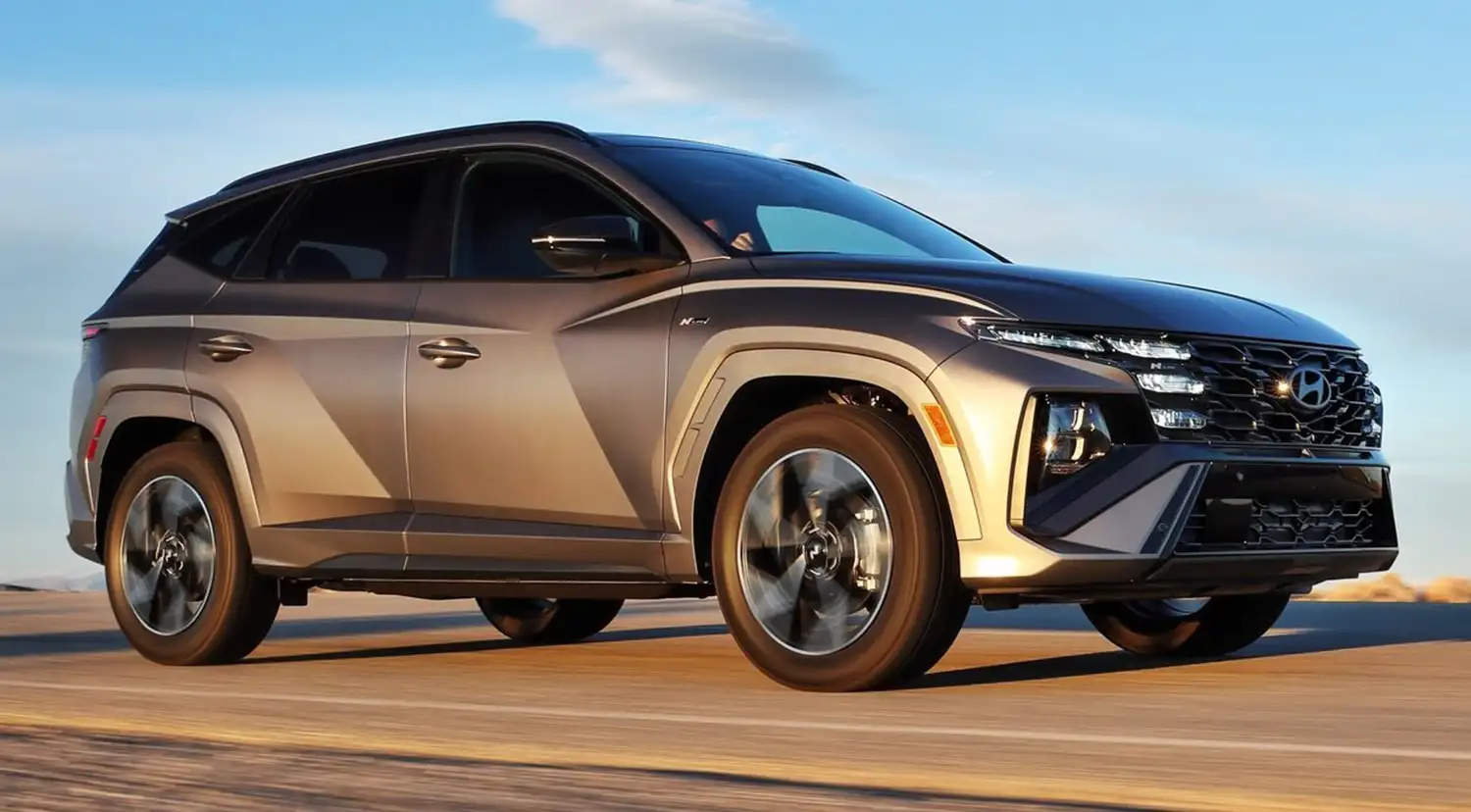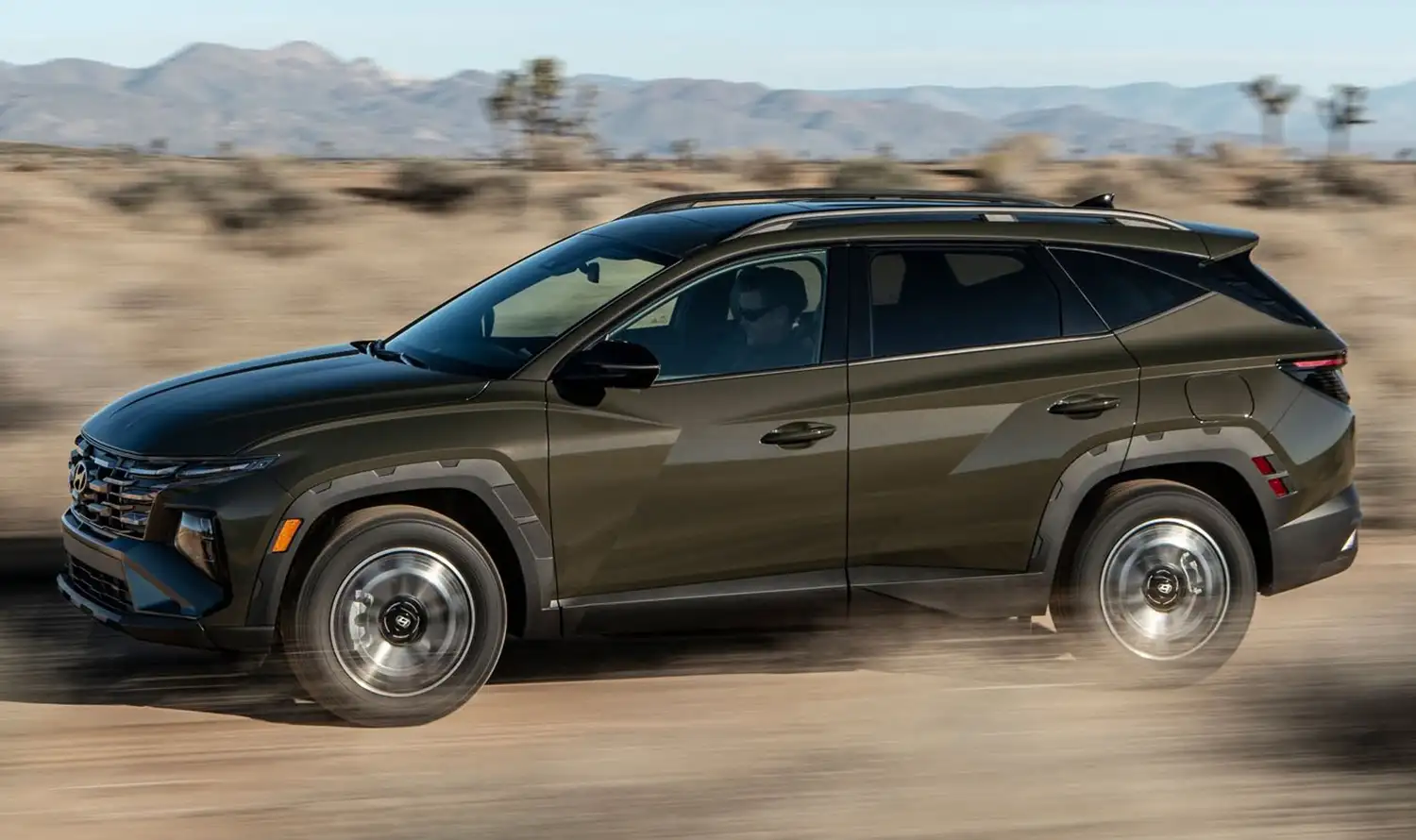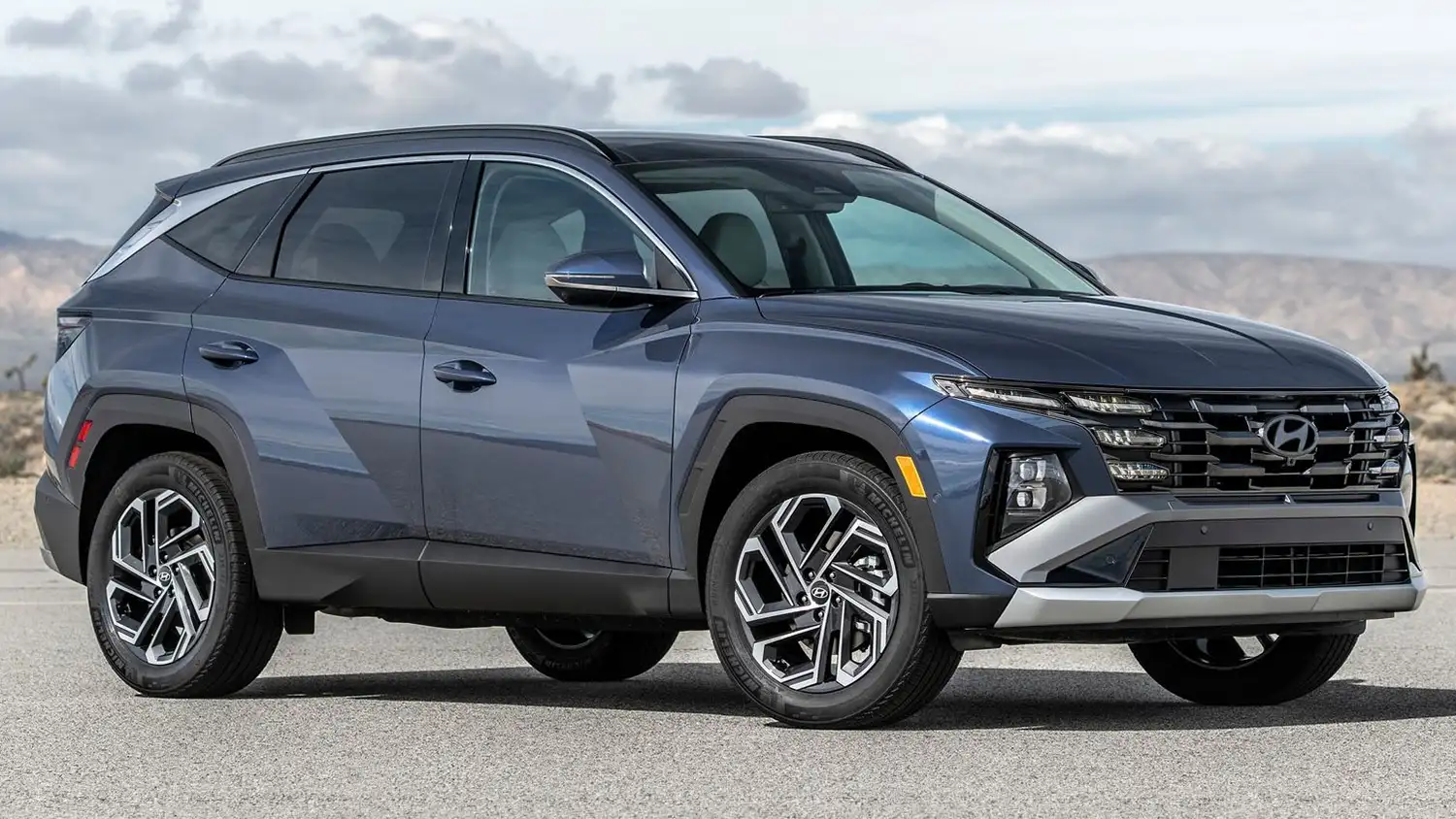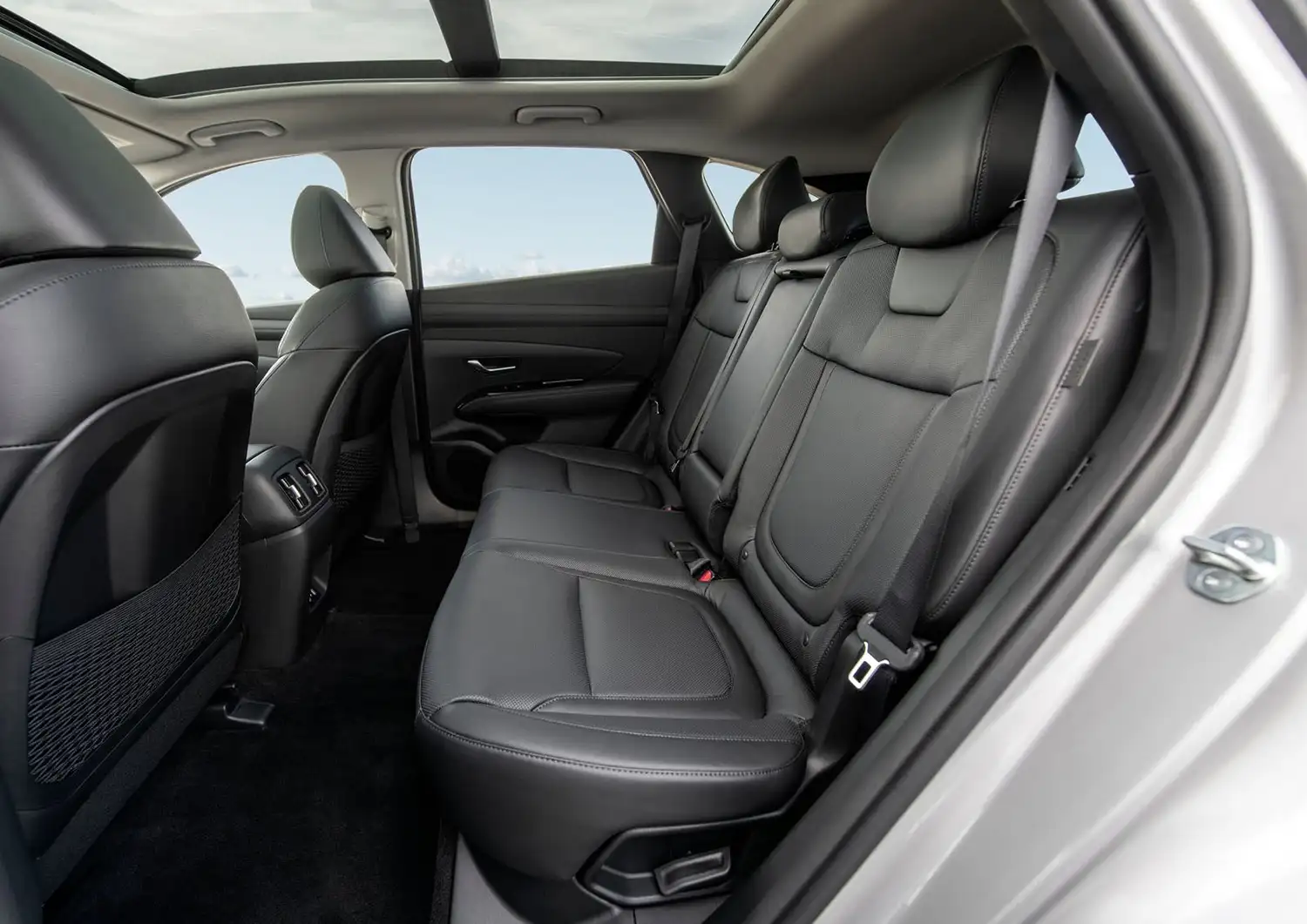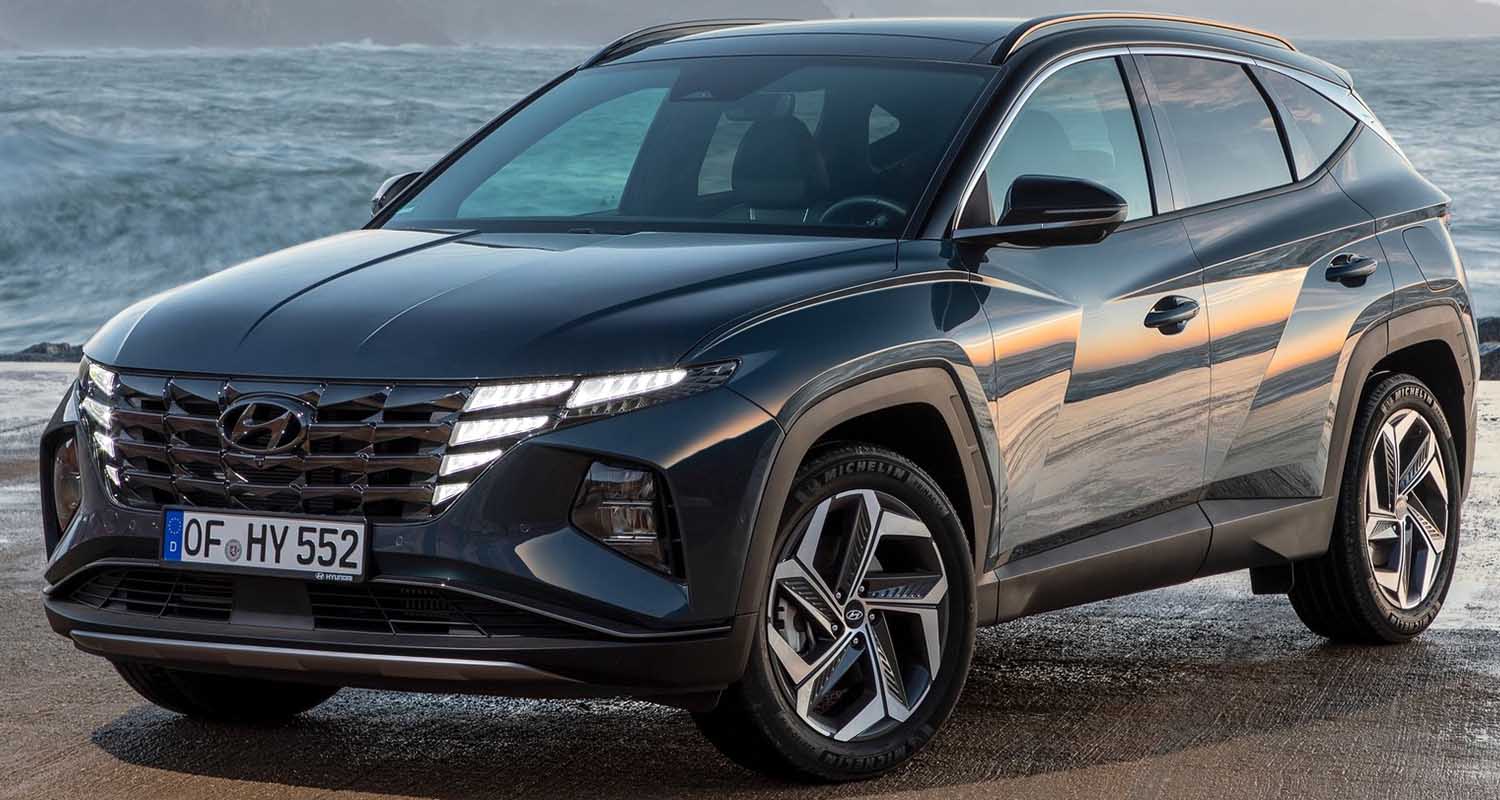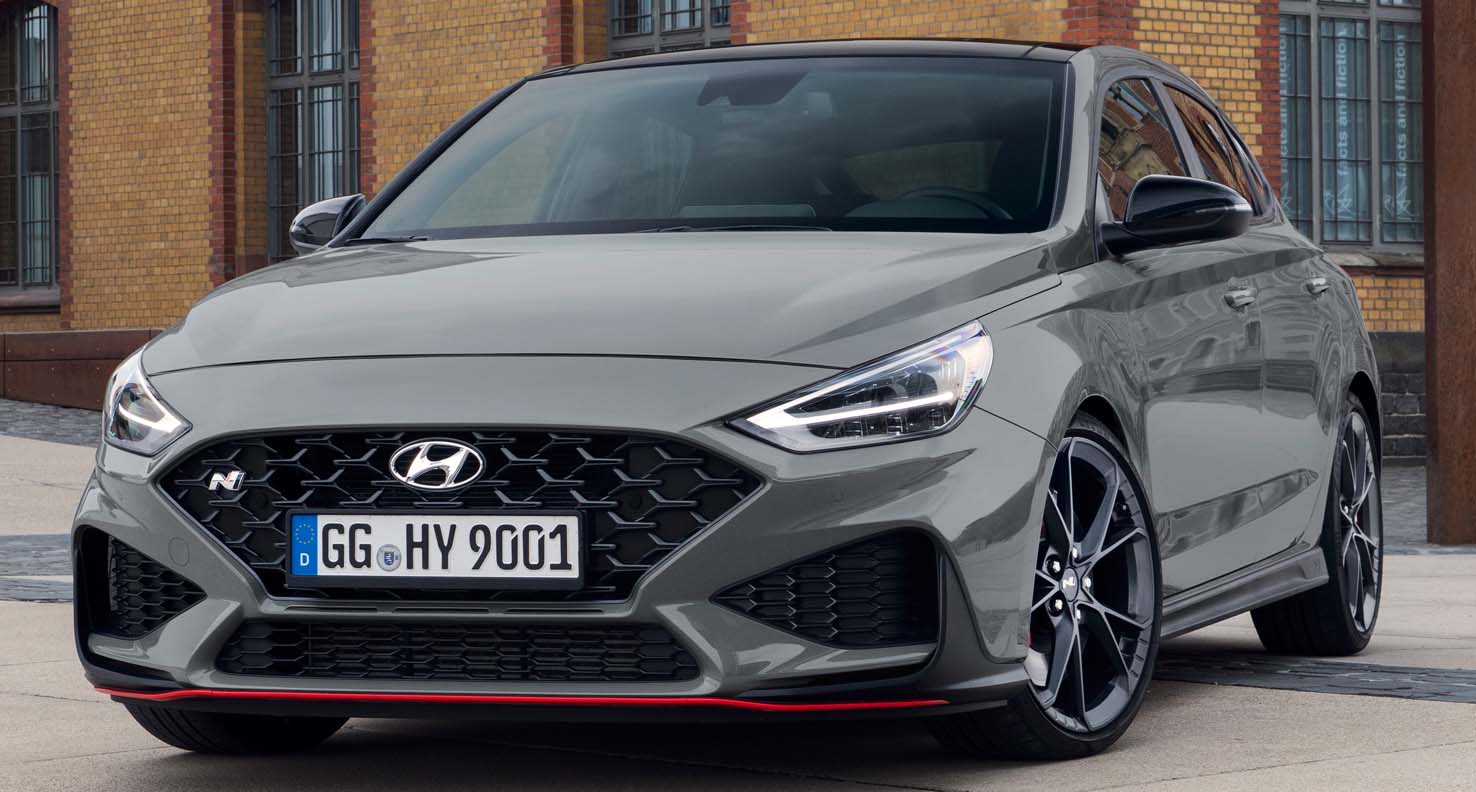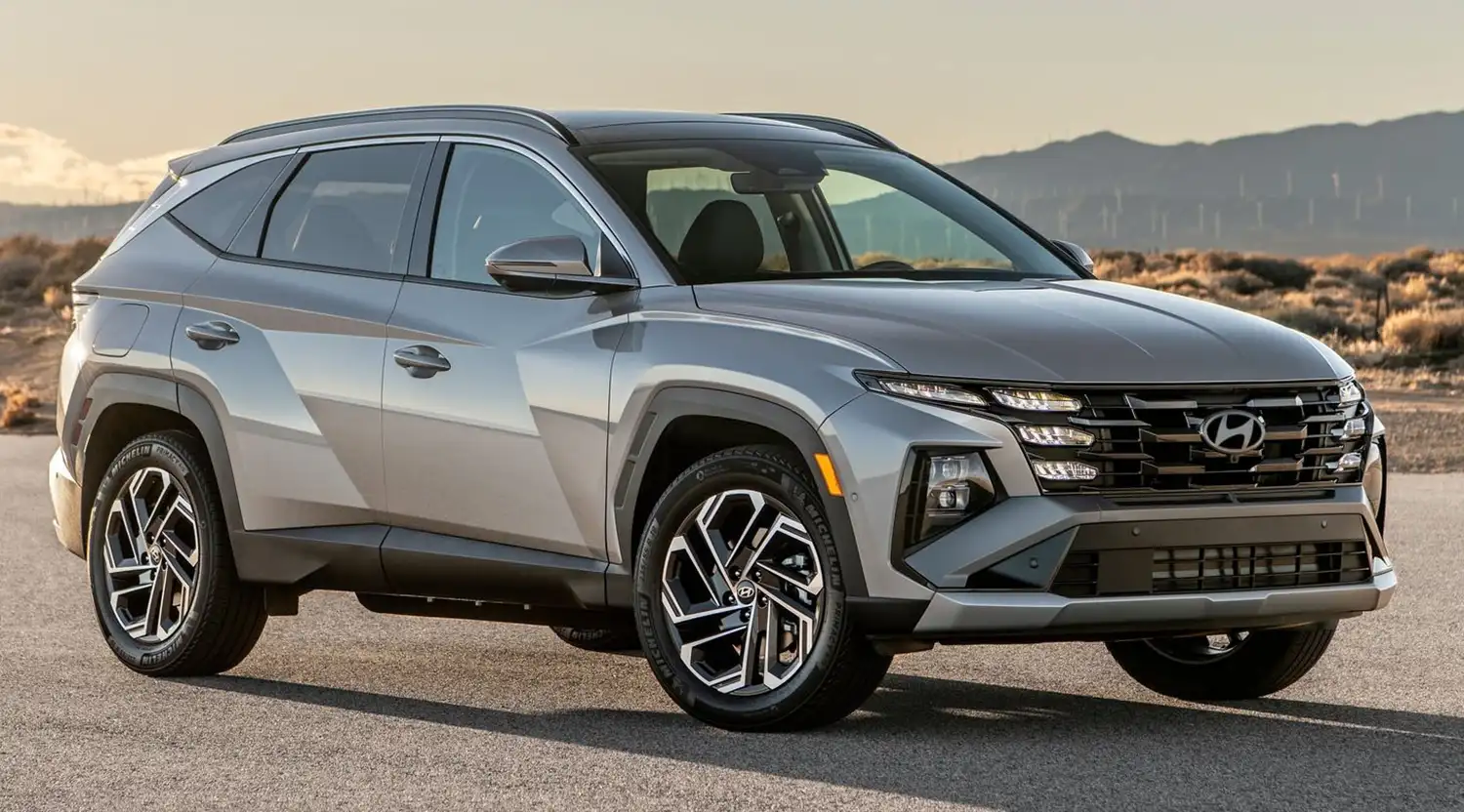
Hyundai Tucson [US Specs]
Hyundai unveiled its thoroughly refreshed 2025 Tucson SUV in a North American reveal at the New York International Auto Show. The updated 2025 Tucson continues to build upon its successful Sensuous Sportiness design identity with a more commanding front and rear appearance, updated lighting signatures, new alloy wheel designs and a significantly redesigned interior. A plethora of new and enhanced driver comfort, convenience and safety technologies have also been added. 2025 Tucson 2.5L models will arrive at U.S. dealerships in June 2024, while 1.6L turbo hybrid and plug-in hybrid models will be available in late summer 2024.
“The refreshed 2025 Tucson SUV expands the appeal of our full-spectrum eco-powertrain approach, offering internal combustion, hybrid, and plug-in hybrid models in a popular compact SUV design,” said José Muñoz, president and global COO, Hyundai Motor Company and president and CEO of Hyundai Motor North America. “With all-wheel drive offered on gas and hybrid models, customers can enjoy all-road, all-weather capability coupled with outstanding efficiency and an attractive variety of trims, including outdoor-focused XRT and sporty N Line models.”

Exterior design enhancements
The 2025 Hyundai Tucson presents an evocative, bold appearance with ‘Parametric Dynamics’ design language and kinetic, jewel-like surface detailing that ensures its distinct identity in today’s crowded SUV marketplace. For 2025, revised exterior styling imbues Tucson with a more planted, substantial look thanks to a new grille, redesigned front and rear bumper fascia, and an updated daytime running light signature. New alloy wheels, anodized aluminum badging, and a 75-mm longer rear wiper blade for improved visibility round out these purposeful changes.
The front fascia styling enhancements incorporate stronger vertical grille elements for a more rugged, stable appearance. Tucson’s iconic daytime running light signature has been simplified from ten lighting areas to eight larger units for an even bolder presence, day, or night. New bridge-type raised roof side rails add capability and ruggedness to the outdoors-oriented XRT.
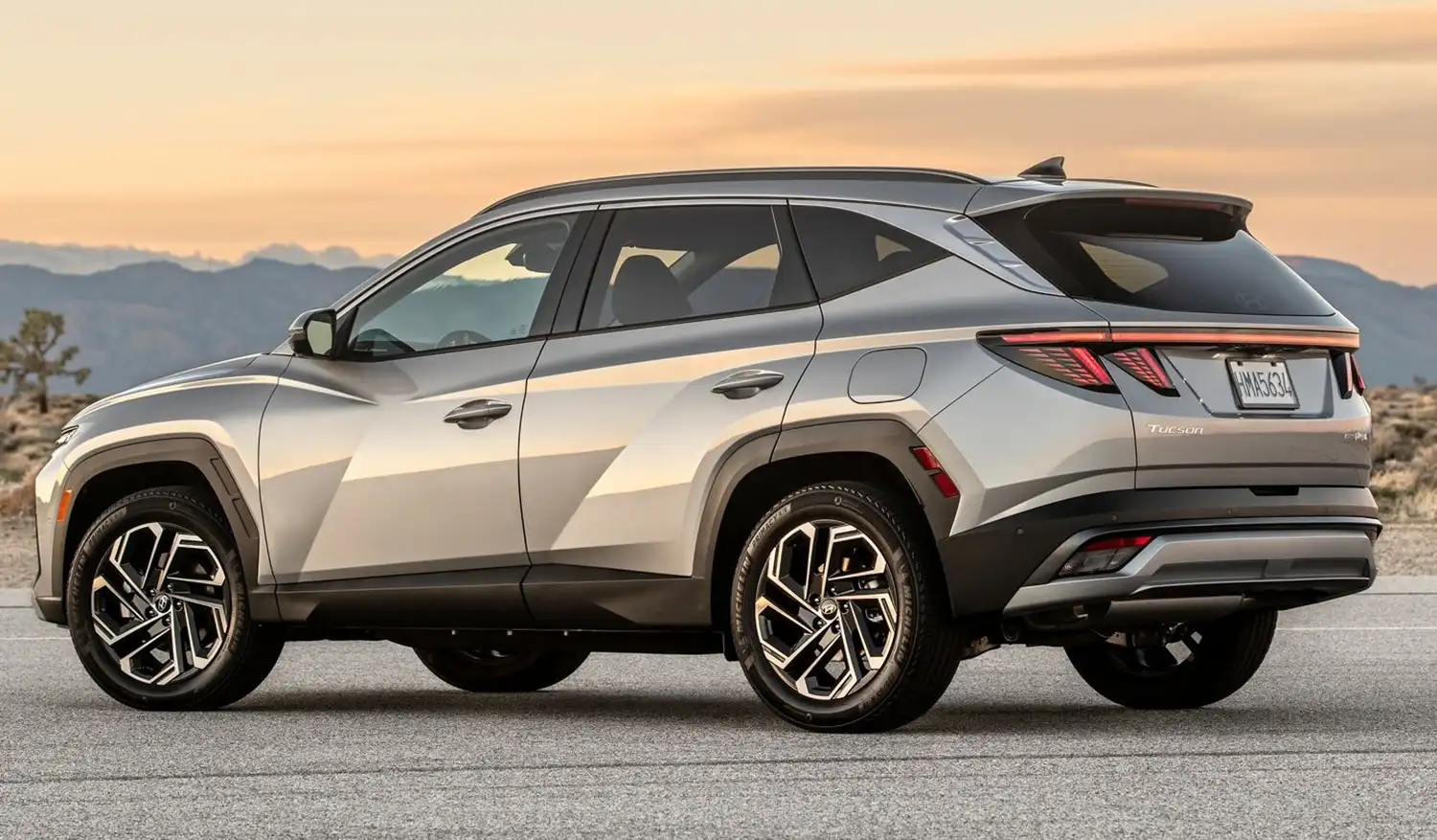
Redesigned interior and infotainment
The 2025 Hyundai Tucson’s interior may feature the biggest upgrades of all, thanks to a more open-feeling design and a higher-tech, yet easier-to-use infotainment interface. This cabin glow-up incorporates a redesigned panoramic curved display that integrates an available 12.3-inch digital instrument cluster and an enlarged 12.3-inch infotainment display. A redesigned center stack includes the addition of supplementary knobs and switchgear for frequent-use driver controls including audio volume and tuning, along with select HVAC controls for greatly improved ergonomics. The center console, steering wheel and door panel accents have also been redesigned for both fresh appeal and enhanced usability. A new dashboard tray located above the glovebox adds even more storage space for front-seat passengers.
On premium models with shift-by-wire function, the transmission is now controlled by a column-mounted gear selector, liberating more usable space in the center console area. A larger, 12.3-inch hoodless infotainment touchscreen has been added to all trims. This system features faster processing speeds, enhanced colors, and sharper graphics along with more intuitive layouts for improved ease of use. The wireless device quick-charging pad (15-watt) has also moved to a more convenient driver access position.
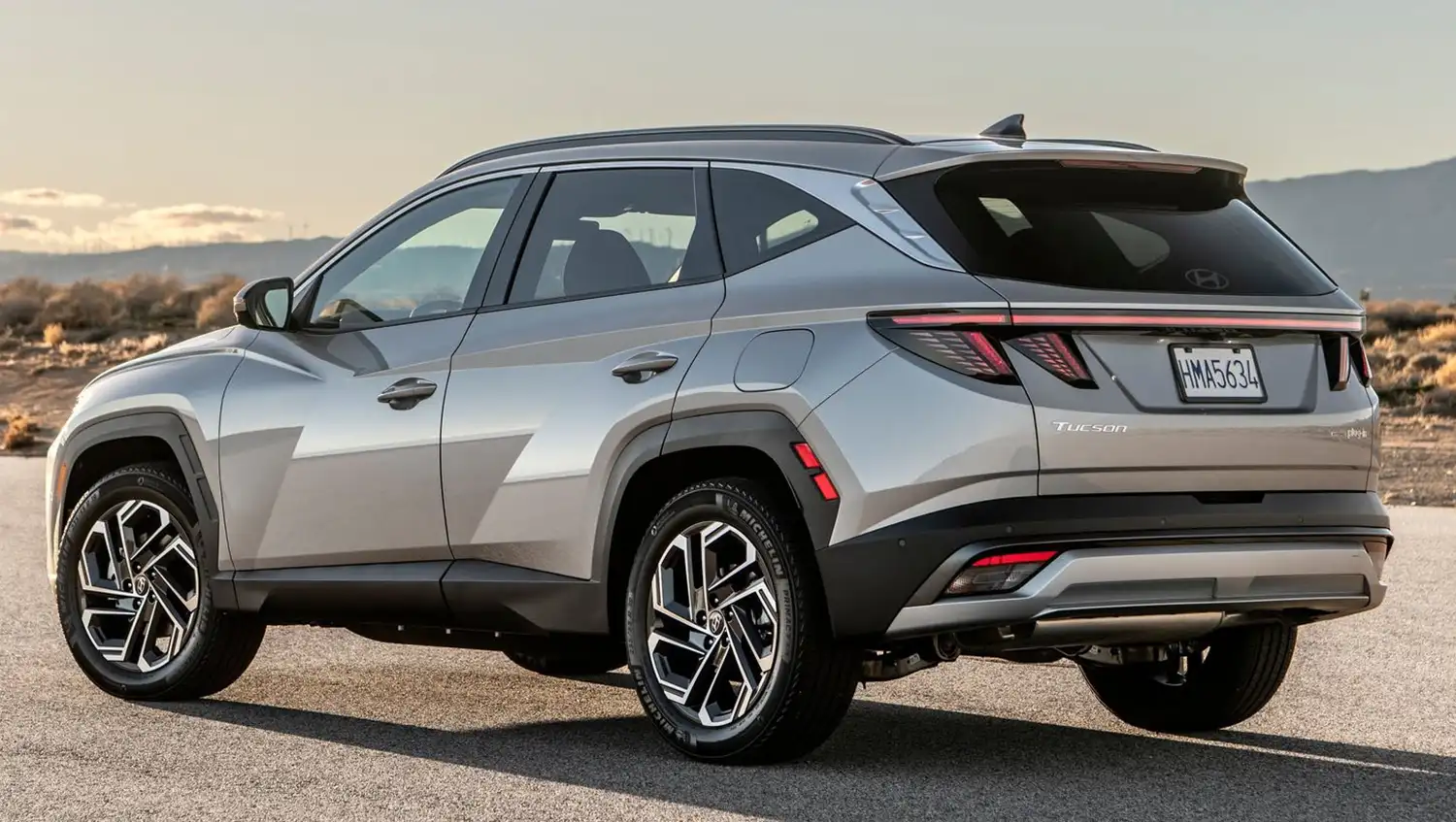
For enhanced passenger comfort, Limited models include acoustic laminated front side windows to reduce interior noise. Available heated steering wheel and rear seat heaters now offer additional temperature settings for more precise control and comfort. XRT models add XRT debossing on the front seatbacks.
Human-centric technology integration
For 2025, the new Tucson can now make convenient updates to various vehicle systems, including powertrain, safety, multimedia, and mapping systems (when equipped with navigation) via over-the-air (OTA) updates.
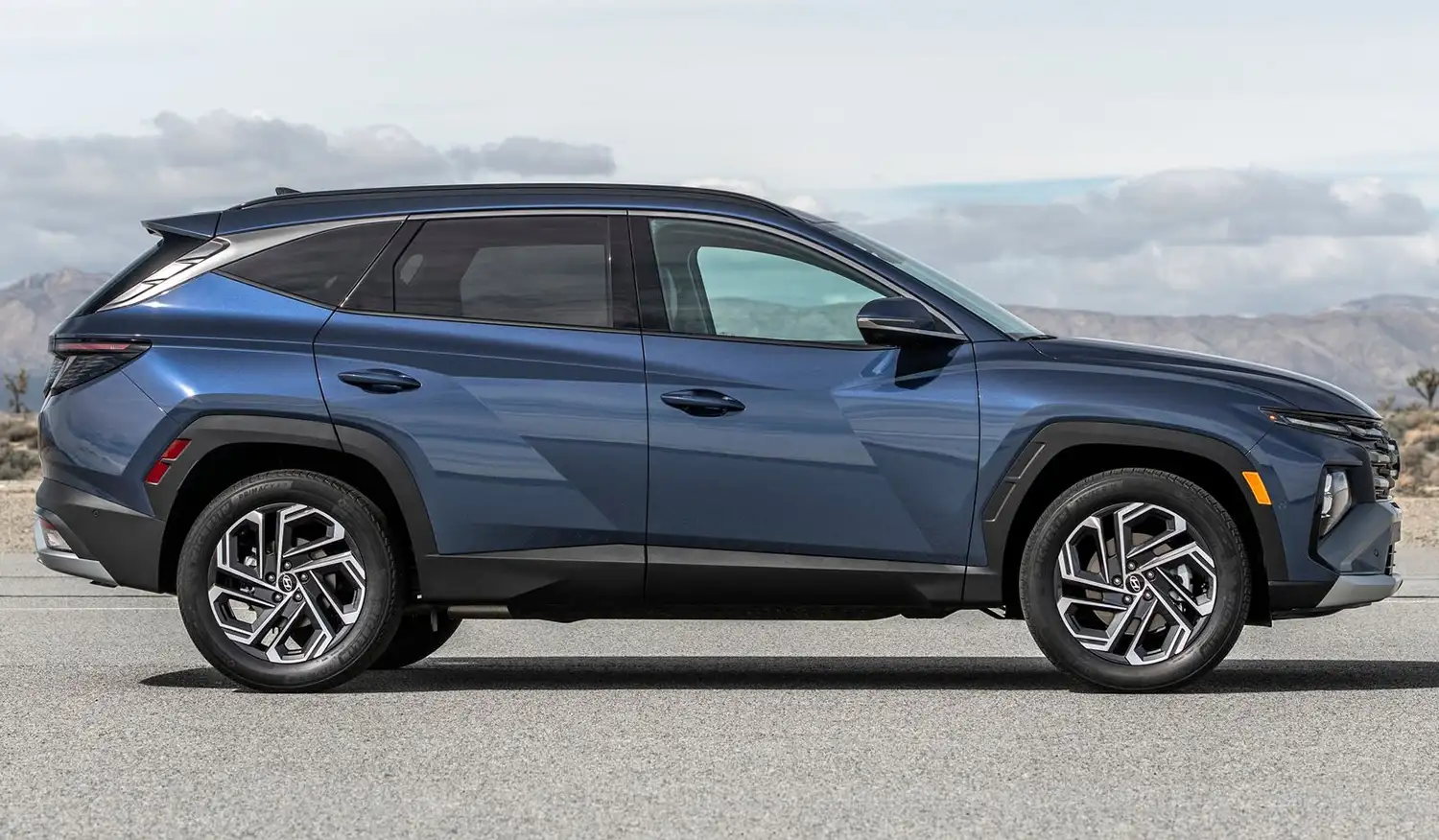
Tucson’s available integrated memory system includes both power driver’s seat and outside mirror settings for greater convenience. Front passengers now have access to USB-C data and charging ports with improved 27-watt charging capability. Rear passengers also receive standard USB-C charging ports. For 2025, Wireless Android Auto™ and Apple CarPlay® integration are now standard on all Tucson models. What’s more, a new 12-inch color Head-Up Display (HUD) with premium graphics is also available. Impressively, the HUD even displays turn-by-turn directions via CarPlay® and Android Auto™ when equipped with the onboard navigation system. Further, a newly available fingerprint authentication sensor on the instrument cluster provides a new level of security and convenience. Its biometric authentication can allow the driver to securely start and drive the Tucson without a smart key.
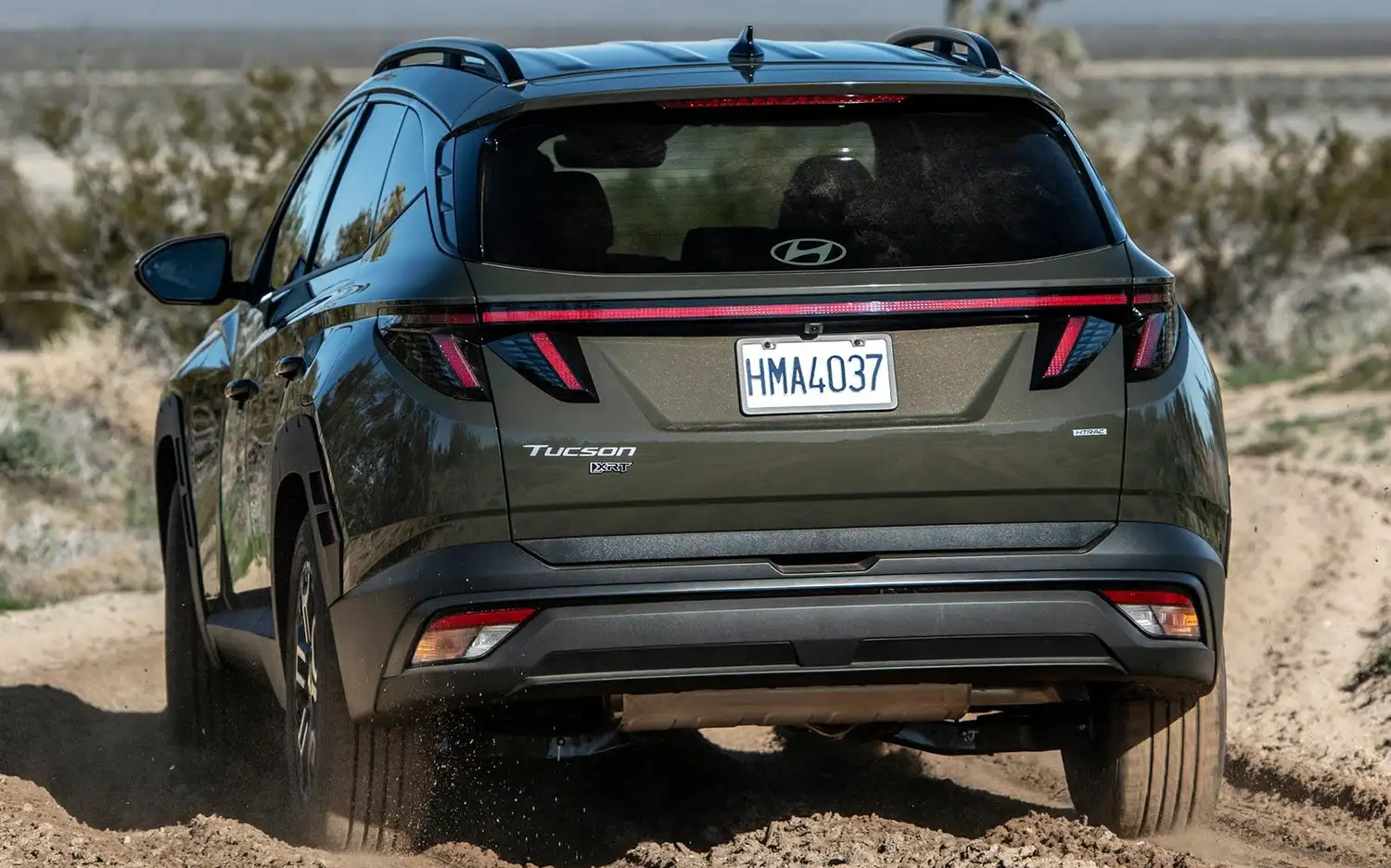
Tucson’s proximity-key entry with push-button start is now standard, while available Digital Key 2 Premium provides convenient, key-fob-free vehicle access. This system allows door locking, unlocking and vehicle engine start all without needing to take your phone out of your pocket or purse using Bluetooth Low Energy, Advanced NFC, and Ultra-Wideband technologies. It even makes it easy to share temporary keys digitally with family, friends, or clients. In addition, SiriusXM® satellite capable radio is standard and all Hyundai Bluelink+ services are now offered complimentary with purchase. With Bluelink+ key safety and maintenance features, such as Auto Collision Assistance, SOS Assistance, Remote Diagnostics, Maintenance Reminders, over-the-air ECU updates and convenient vehicle remote features are available with no trial period, and for the life of the supporting technology and 4G LTE network. Hyundai Pay, which enables paying for parking and fueling from inside the vehicle is available, as is a WiFi hotspot that can connect a total of five devices at once for full-family connectivity. The HVAC system now adds automatic fan ventilation after A/C system shutdown to help reduce condensation and odors caused by excessive humidity.
Enhanced safety
For 2025, Tucson adds Forward Attention Warning (FAW), which utilizes an infrared camera mounted on the steering column to help track the driver’s eye gaze and monitor attention levels to help ensure safe driving. Available Smart Cruise Control 2 continually assesses driver alertness. If the driver is found to be unresponsive, the system can even help safely bring the vehicle to a stop, activating the hazard lights and the electronic parking brake once the vehicle is stopped. Additionally, rear outboard passenger seatbelts now feature standard pretensioners and load limiters.
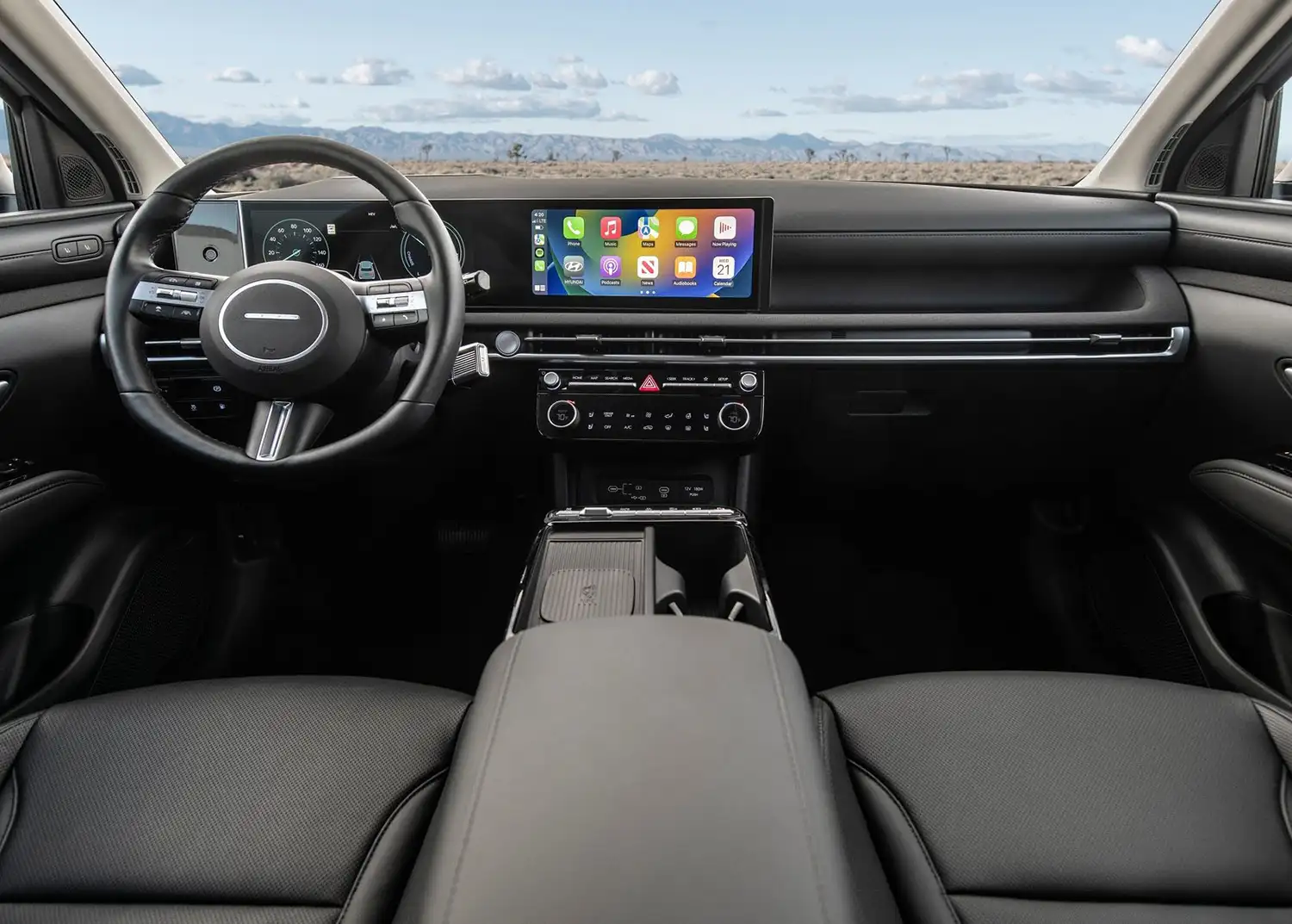
Diverse Smartstream™ powertrain family line-up
The 2025 Tucson offers a Smartstream™ 2.5-liter, direct-injected and multi-port-injected gasoline engine as well as available 1.6-liter, direct-injected, turbocharged hybrid and plug-in hybrid powertrains. The Smartstream 2.5-liter four-cylinder engine boasts a generous 187 horsepower at 6,100 rpm and 178 lb.-ft. of torque at 4,000 rpm thanks to high-efficiency combustion. The eight-speed automatic transmission mated to the standard 2.5-liter engine provides quick and crisp shifts for an engaging and efficient driving experience.
Hybrid and plug-in hybrid powertrains
Hyundai Tucson’s hybrid models provide a balanced combination of fun-to-drive performance and excellent economy compared with some competitors’ pure efficiency focus. 2025 Tucson hybrid and plug-in models now offer driver-adjustable levels of regenerative braking for improved control and comfort.
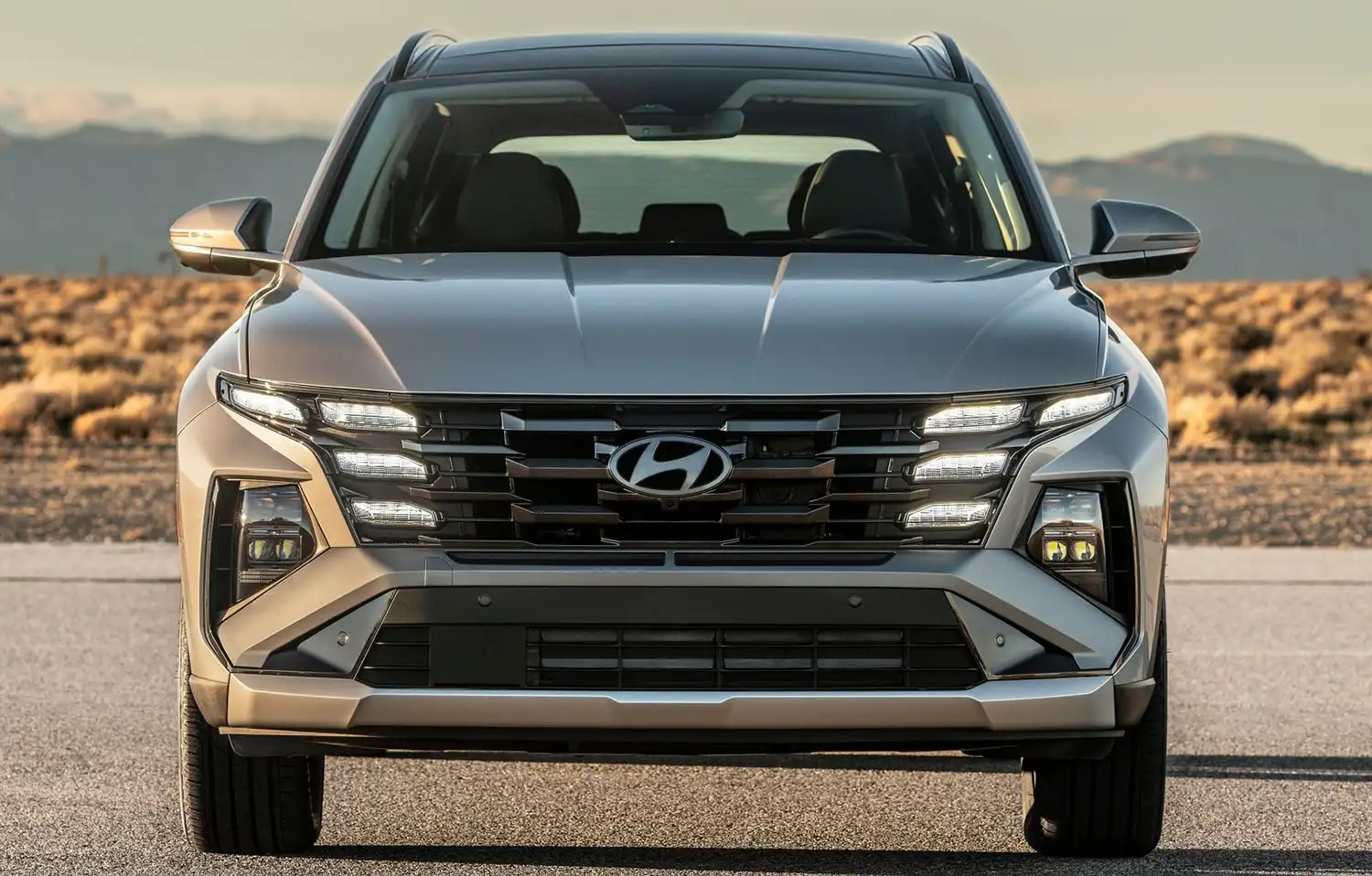
The Hybrid powertrain’s 1.6-liter turbocharged gasoline engine produces an estimated 178 horsepower and 195 lb.-ft. of torque, with an estimated 231 total hybrid system horsepower. This hybrid system also produces a total estimated 258 lb.-ft. of torque thanks to a powerful 47.7-kW electric motor (formerly 44.2 kW) and a 1.49-kWh lithium-ion battery pack. Tucson Hybrid delivers its abundant power through a specially tuned six-speed automatic transmission for smooth, quiet, and efficient performance.
Plug-In Hybrid models feature a high-output 1.6-liter turbocharged, direct-injected four coupled with a specially tuned six-speed automatic transmission and a more powerful 72.0-kW electric motor (increased from 66.9 kW). Plug-in Hybrid total system output is rated at a robust 268 horsepower and 258 lb.-ft. of torque. The Plug-In Hybrid battery is larger than the Hybrid pack, offering 13.8 kWh of lithium-ion power. Level 2 AC charging takes fewer than two hours to recharge the PHEV’s battery using its 7.2-kW onboard charger.
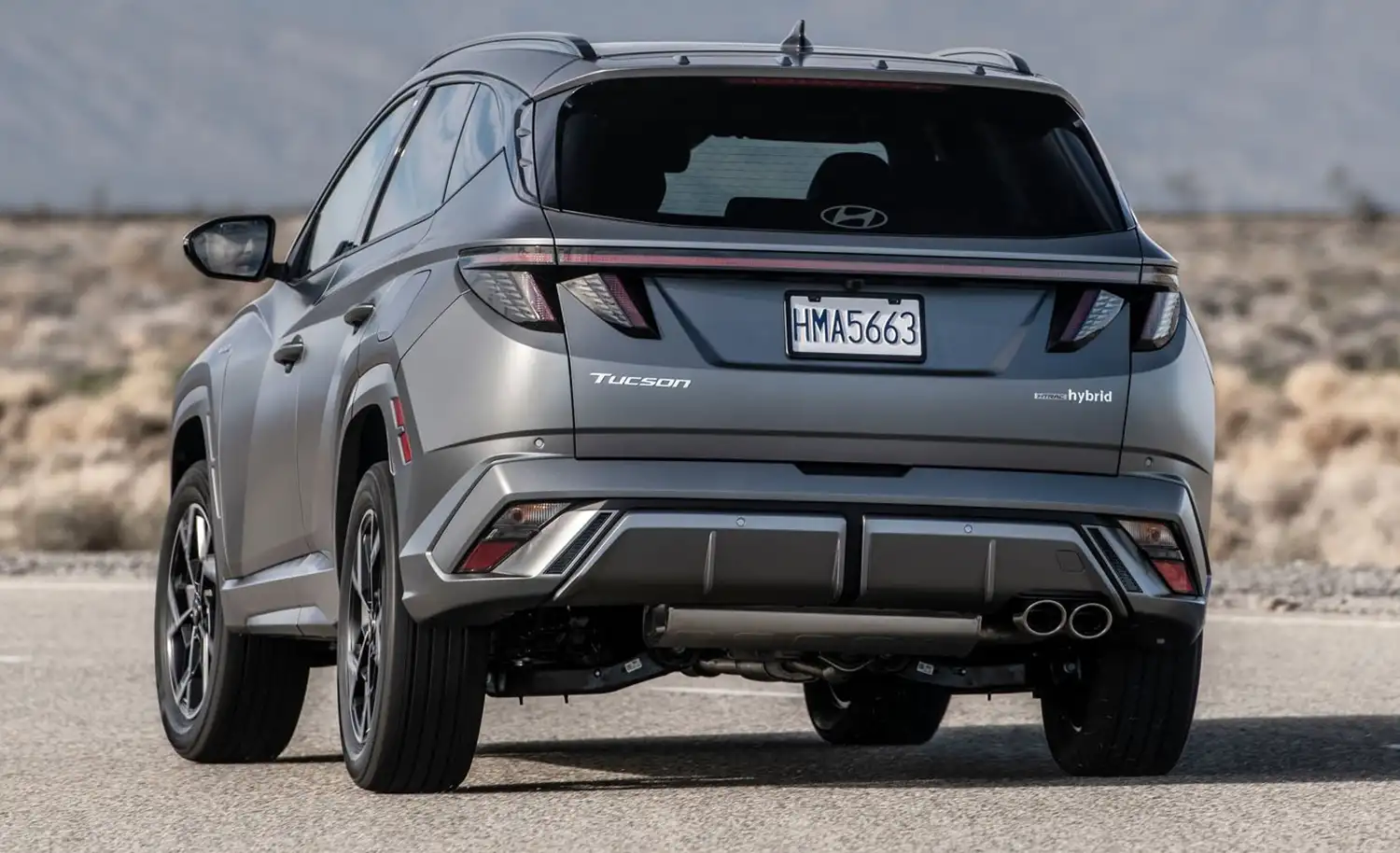
Shared hybrid and plug-in hybrid technologies
Hybrid and plug-in hybrid models include standard HTRAC® all-wheel drive (AWD) to meet the needs of eco-minded buyers seeking enhanced capability in inclement weather and limited-traction situations. Driver-selectable HTRAC® Normal, Sport, Snow, and (new for 2025) My Drive modes offer confident driver control in a wide range of conditions. Moreover, within the new My Drive sub-menu, a driver-selectable Baby Mode helps reduce the sharpness of initial acceleration, smoothing out driver inputs for a gentler acceleration feeling for passengers. This more serene experience helps reduce potential disturbances that may upset infants or pets. Additionally, a new Green Zone drive mode optimizes pure EV mode for use in urban zones with specific eco-focused requirements. The Sport setting gives Hyundai Tucson a more agile feel by sending additional torque to the rear wheels for a sporty, dynamic experience.
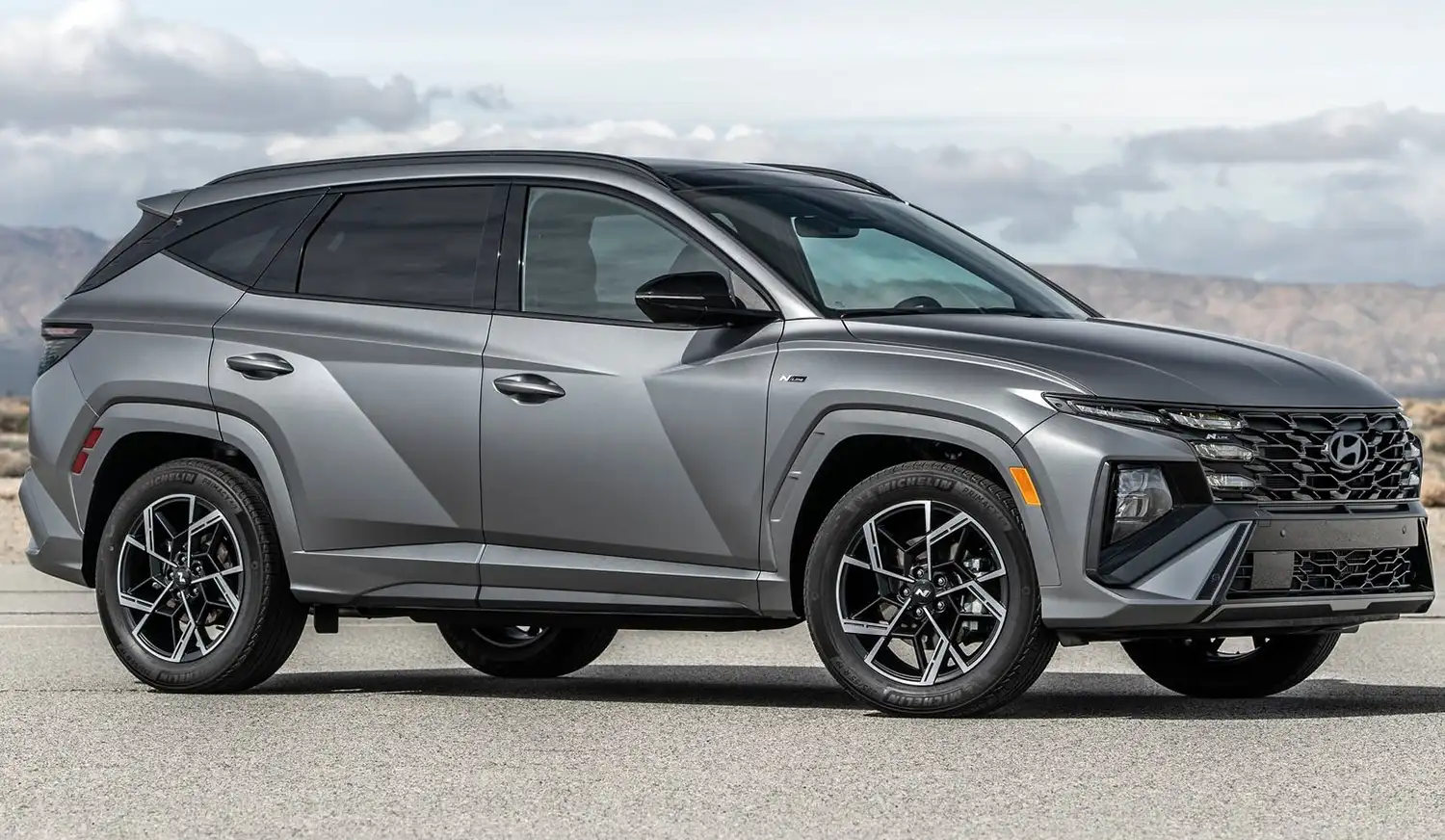
e-Motion driving dynamics
Tucson Hybrid models feature Hyundai’s e-Motion technology, which precisely applies electric motor torque control according to dynamic inputs and road conditions to improve cornering performance for ened driver confidence and even more fun-to-drive dynamics.
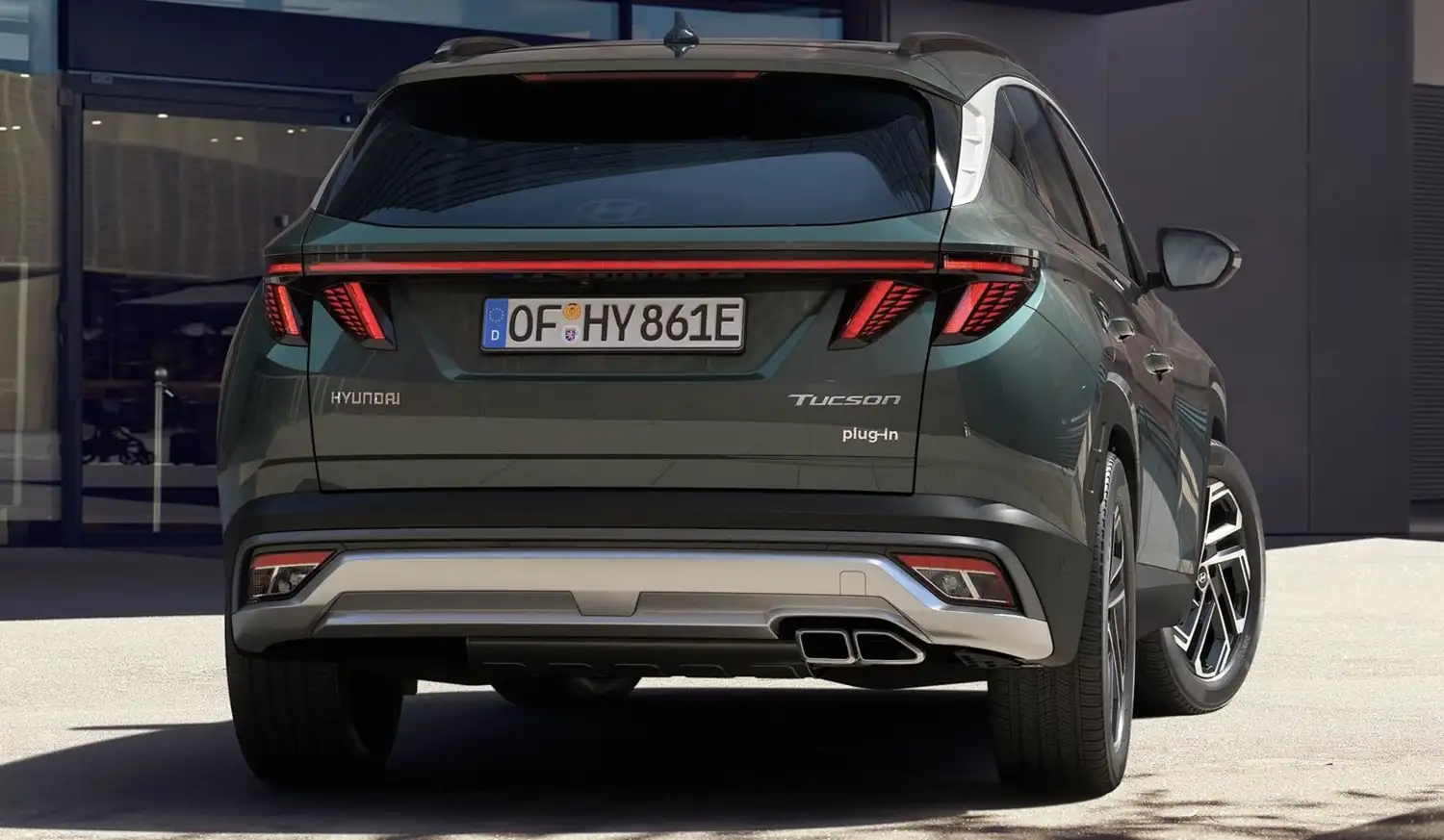
Hyundai Tucson [Euro Specs]
Since its debut in 2004, the Hyundai Tucson has captured the hearts of European drivers, establishing itself as a bestseller and a fan favourite across the continent. In 2023 alone, 158,056 units of the compact SUV were registered in Europe, marking a notable increase in sales from the previous year.
Up until March 2024, 746,836 units of the current, fourth-generation Tucson have been produced for Europe at Hyundai Motor Manufacturing Czech (HMMC) and are being exported to 60 countries – some outside of the continent. The top three markets for Tucson in Europe are Germany, Spain, and the U.K.

Building on its legacy, Hyundai is presenting an update of its top seller, which boasts an array of enhancements, including an updated design, innovative technology, a powertrain line-up that better reflects customer needs, and an improved overall package.
New design, same classic look
As a leading, customer-centric brand Hyundai updated the new Tucson, which retains the progressive appeal of its predecessors while introducing fresh updates. Featuring a sleek and modern look, Tucson boasts redesigned bumpers at the front and rear with new skid plates. In the front, the recognisable ‘angel wing’ design was reimagined with larger daytime running lights, and the retention of the half mirror effect nestled within the grill, which was refined with laser-cut precision and the surface light treatment to create a feeling of complete illumination. The model also boasts a revamped line-up of alloy wheels and introduces five captivating new colours: the launch colour Cypress Green Pearl, Ecotronic Grey Pearl, Ultimate Red Metallic, Jupiter Orange Metallic, and Sailing Blue Pearl.
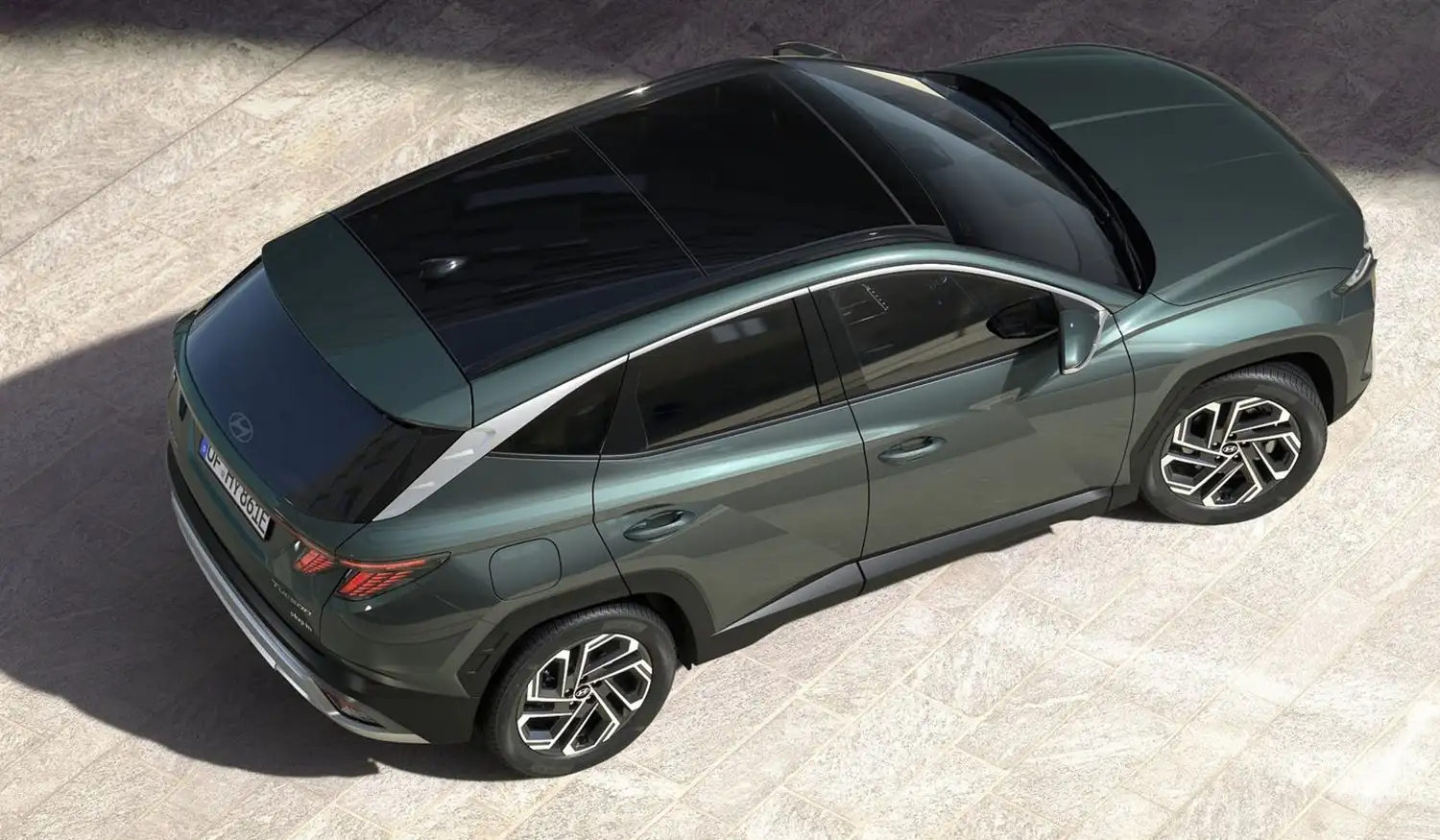
The N Line variant remains sporty looking yet more refined and elegant. These include dedicated front and rear bumper designs, updated grill meshes, the same daytime running lights as the base model, N Line 19″ alloy wheels, body-colour wheel arches and sides.
Inside, the new Hyundai Tucson takes comfort and convenience to new s, introducing a range of updates to enhance the in-car experience for the driver and passengers. Apart from the seats and the centre door trim, the interior was completely redesigned, including the dashboard, centre fascia, steering wheel, and centre armrest. From the redesigned steering wheel to the dual curved 12.3-inch displays for the cluster and infotainment, every detail is crafted with all occupants in mind. The crash pad has been redesigned to adopt a horizontal layout with an open tray. The dual automatic temperature control has also received a new display. Other interior changes include a new armrest type, the introduction of a column type shift by wire behind the steering wheel, and an updated design to the upper door trim.
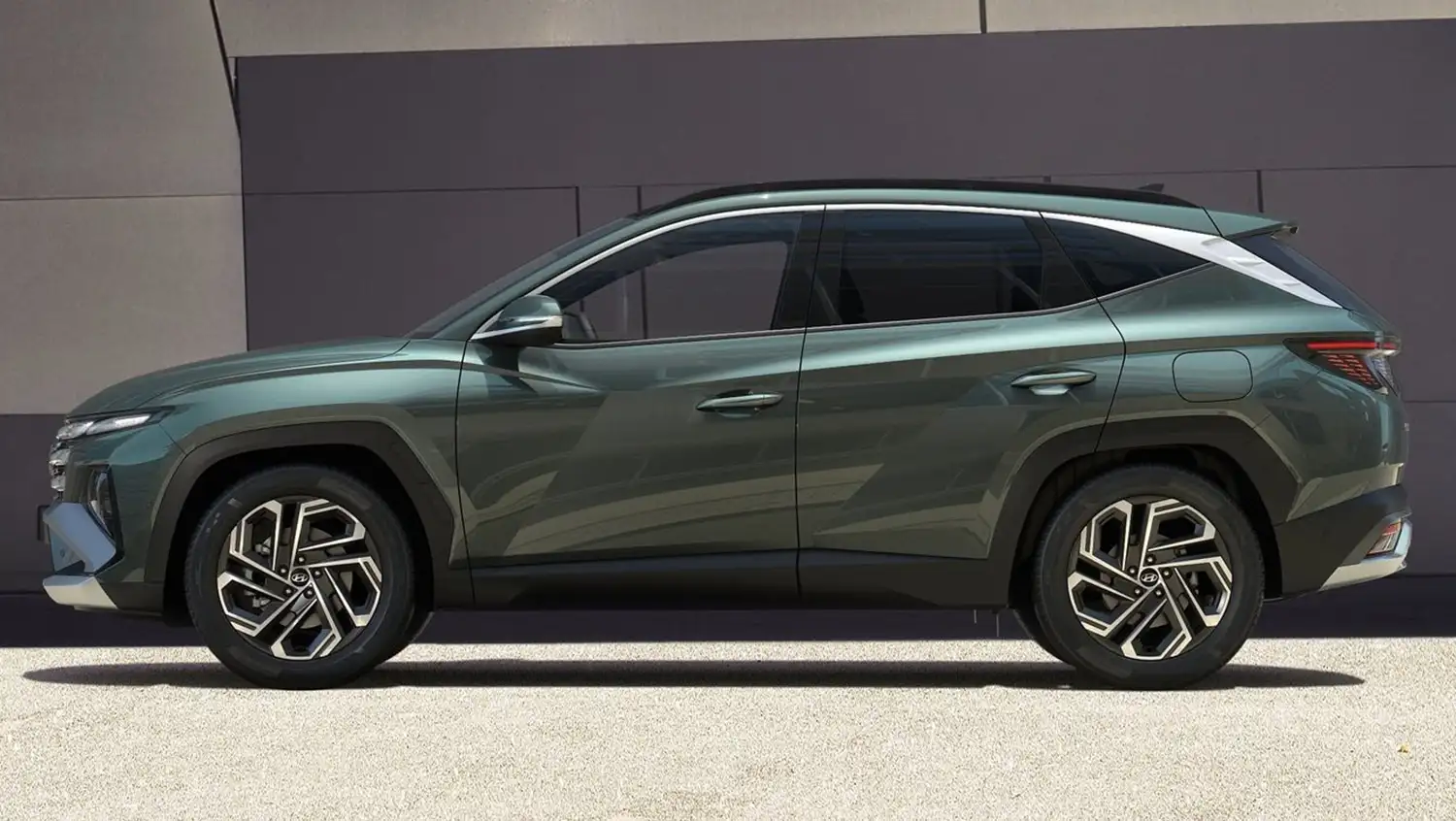
The seats also received a makeover with a new pattern and new material options (cloth & leather combination). For customers seeking more customisation, Tucson introduces a new interior colour pack, Cypress Green. Tucson N Line brings its own set of distinctive features to the interior, such as red stitching and details, such as the red ring around the engine start/stop button, and a textile suede & leather trim in Obsidian Black.
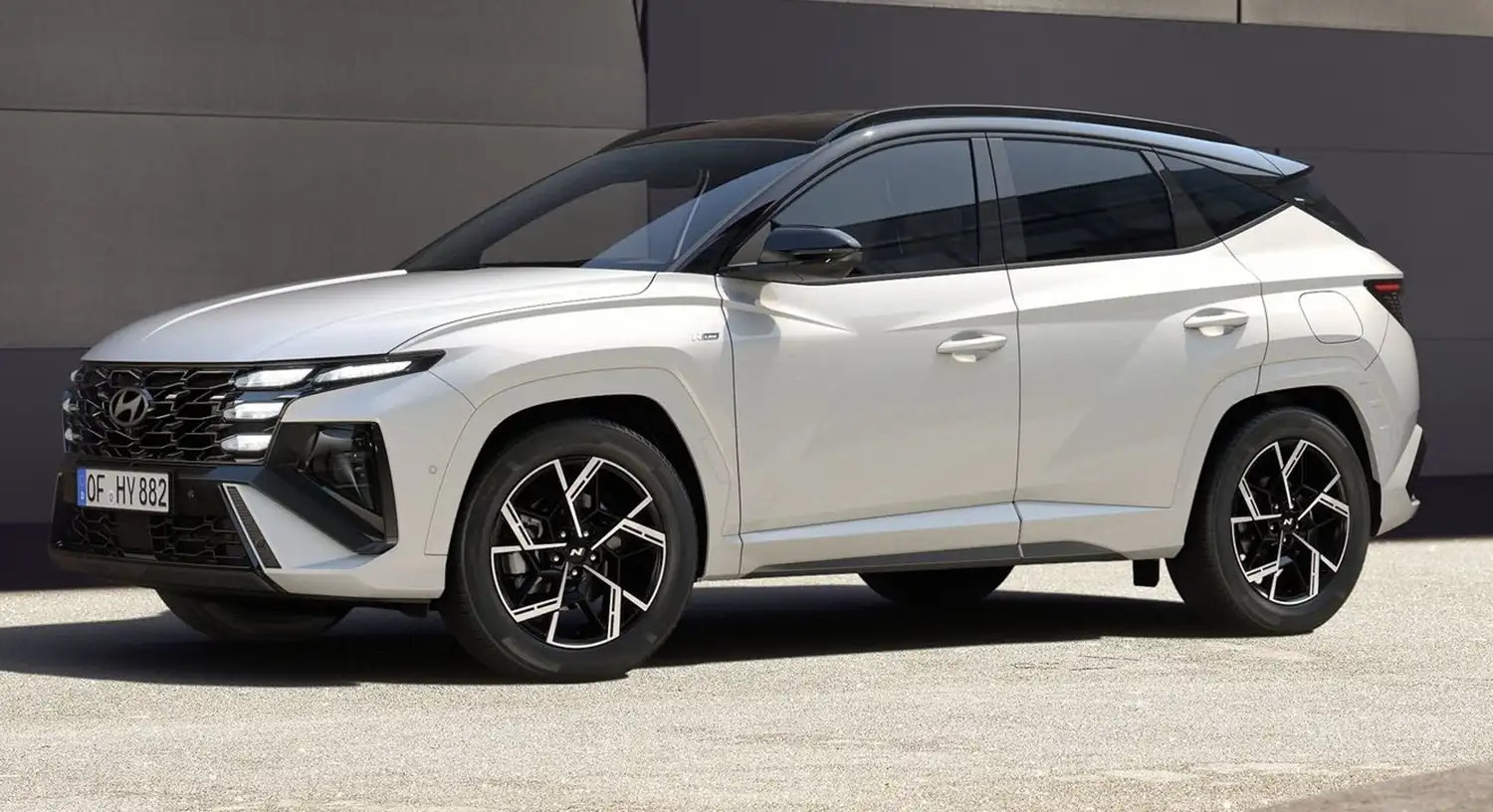
New tech to stay ahead
Hyundai recognises the pivotal role technology plays in enhancing driving pleasure for customers. In a bold leap forward, the company has equipped the new Tucson with a host of innovative features, blending sophistication and functionality, ready for the next adventure.

Maintenance and software updates for Tucson have never been simpler, thanks to electronic control technology facilitating Over-the-Air (OTA) updates. This improves the customer experience by ensuring the vehicle is always equipped with the latest software. Additionally, OTA enables access to Features on Demand (FOD) and the latest navigation and infotainment capabilities.
Boasting an impressive dual curved 12.3-inch display set-up that seamlessly integrates cluster and infotainment functions, Tucson not only delivers a futuristic look but also offers an intuitive and immersive interface. The expansive 12-inch projection Head-Up Display (HUD) further elevates the driving experience, providing the most relevant information right in the driver’s line of sight to minimise distractions.
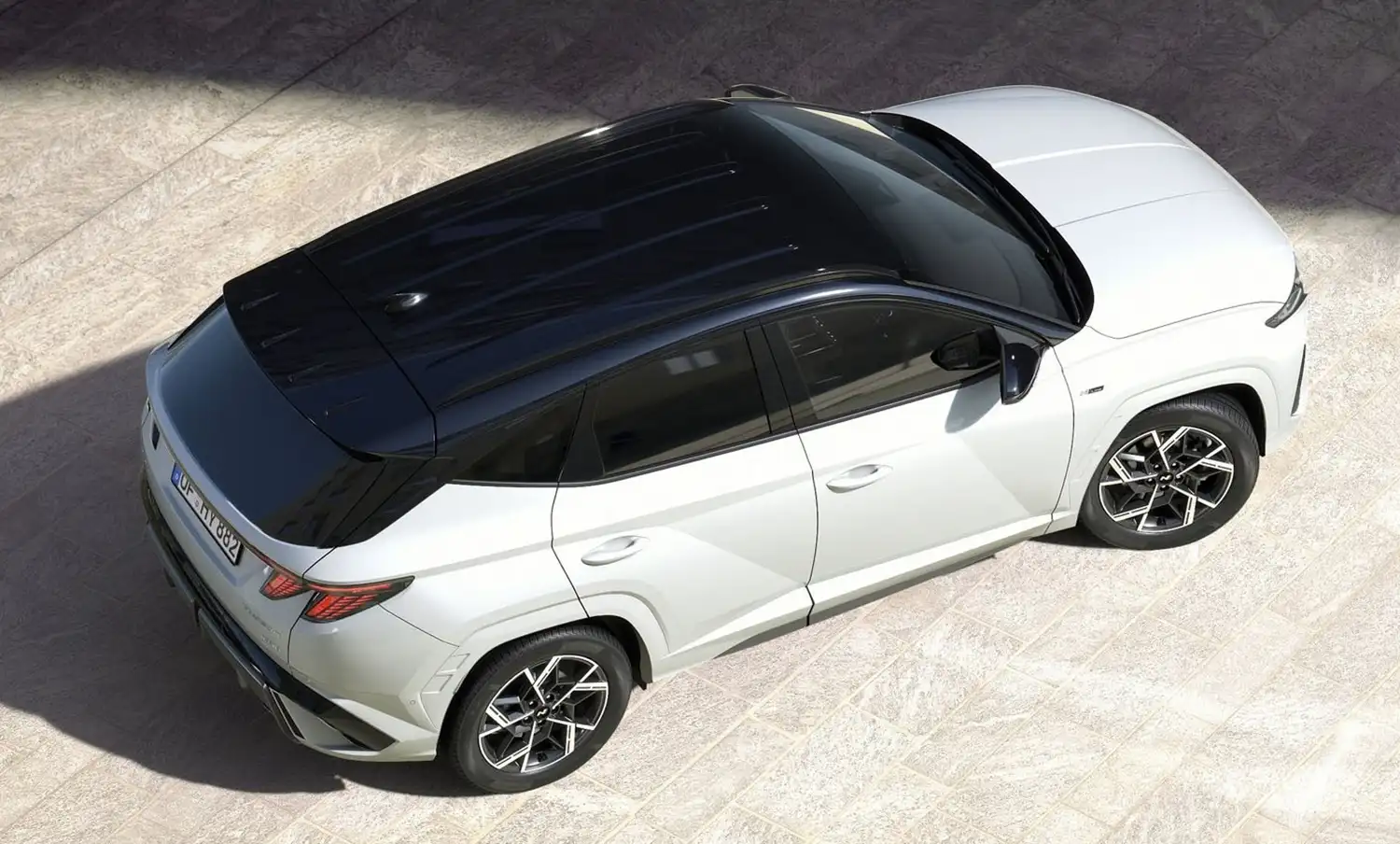
Tucson will support Hyundai Digital Key 2.0, featuring Ultra-Wide Band. This technology demonstrates the brand’s commitment to cutting-edge connectivity, highlighting convenience without compromising on safety. This advanced digital key technology eliminates the need for traditional keys, allowing Tucson to be unlocked from a few metres away and started without needing to place the smartphone on the wireless charging pad.
Rear Occupant Alert (ROA) with radar is ideal for families. The technology alerts the driver when motion or breathing is detected upon getting out of the car.
Illuminating the way forward, the Intelligent Front-Lighting System (IFS) takes the exterior lighting to a new level. The matrix beam LED technology automatically adapts to road conditions to ensure optimal illumination for the driver while reducing glare for others on the road.
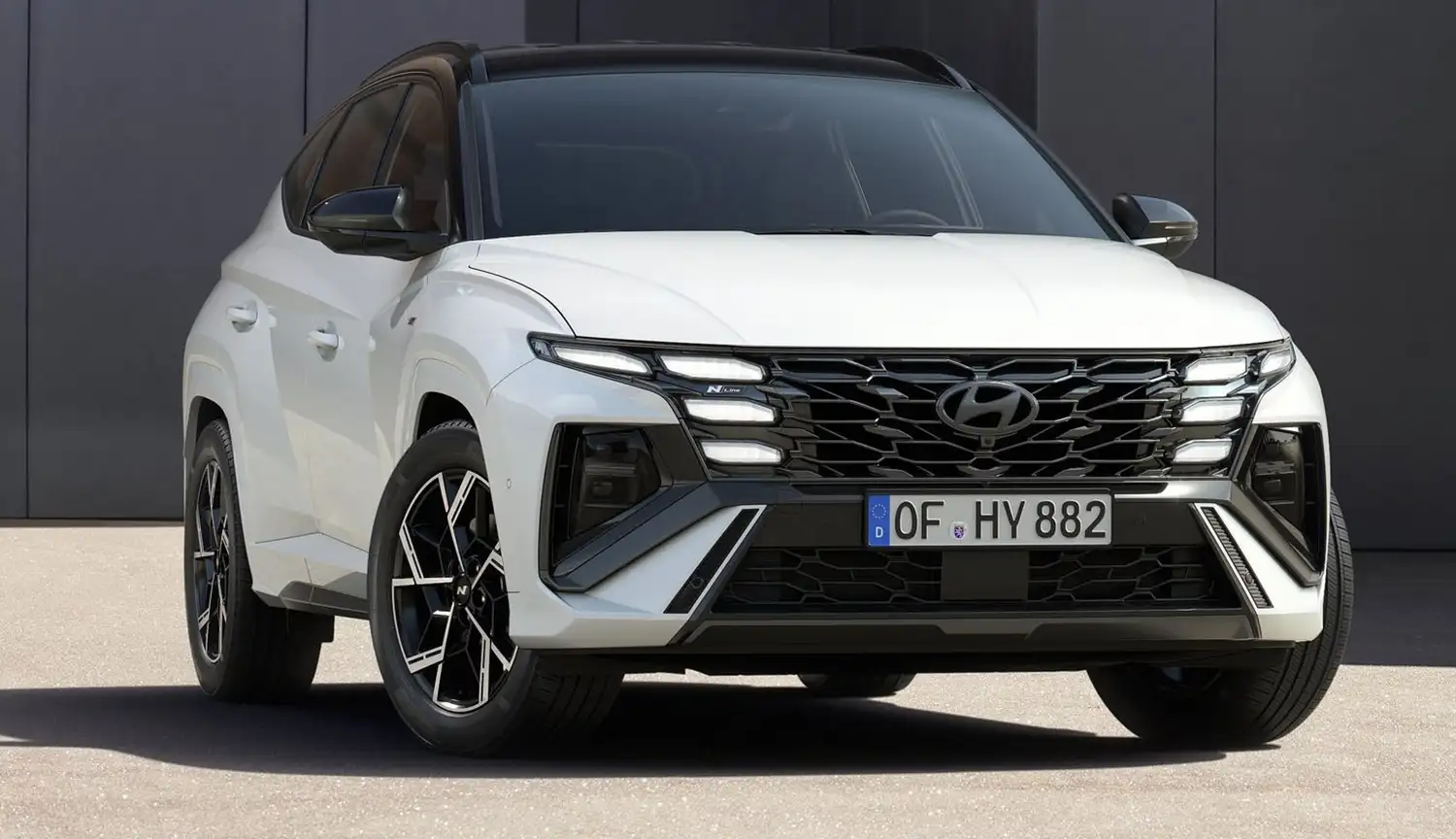
Impressing customers with an updated features package
Customers have always praised Tucson for its level of equipment. In response, Hyundai pulled out all the stops and outfitted the fourth-generation Tucson with an enhanced features package, solidifying its position as a frontrunner in a highly competitive market.
Hyundai strives to meet the evolving demands of today’s drivers. In the realm of safety, the new Tucson goes above and beyond to keep its occupants safe. It stands out with its Advanced Driver Assistance Systems (ADAS), including Crosswind Stability Control (CWC), which works against strong winds at high driving speeds by applying partial braking and steering torque control, improving driving stability.
On top of the updated ADAS, Tucson now includes USB C-type connectivity. Recognising the increasing prevalence and efficiency of USB C-type ports, Hyundai has embraced this standard to offer faster data transfer and charging capabilities, perfect for a variety of devices.
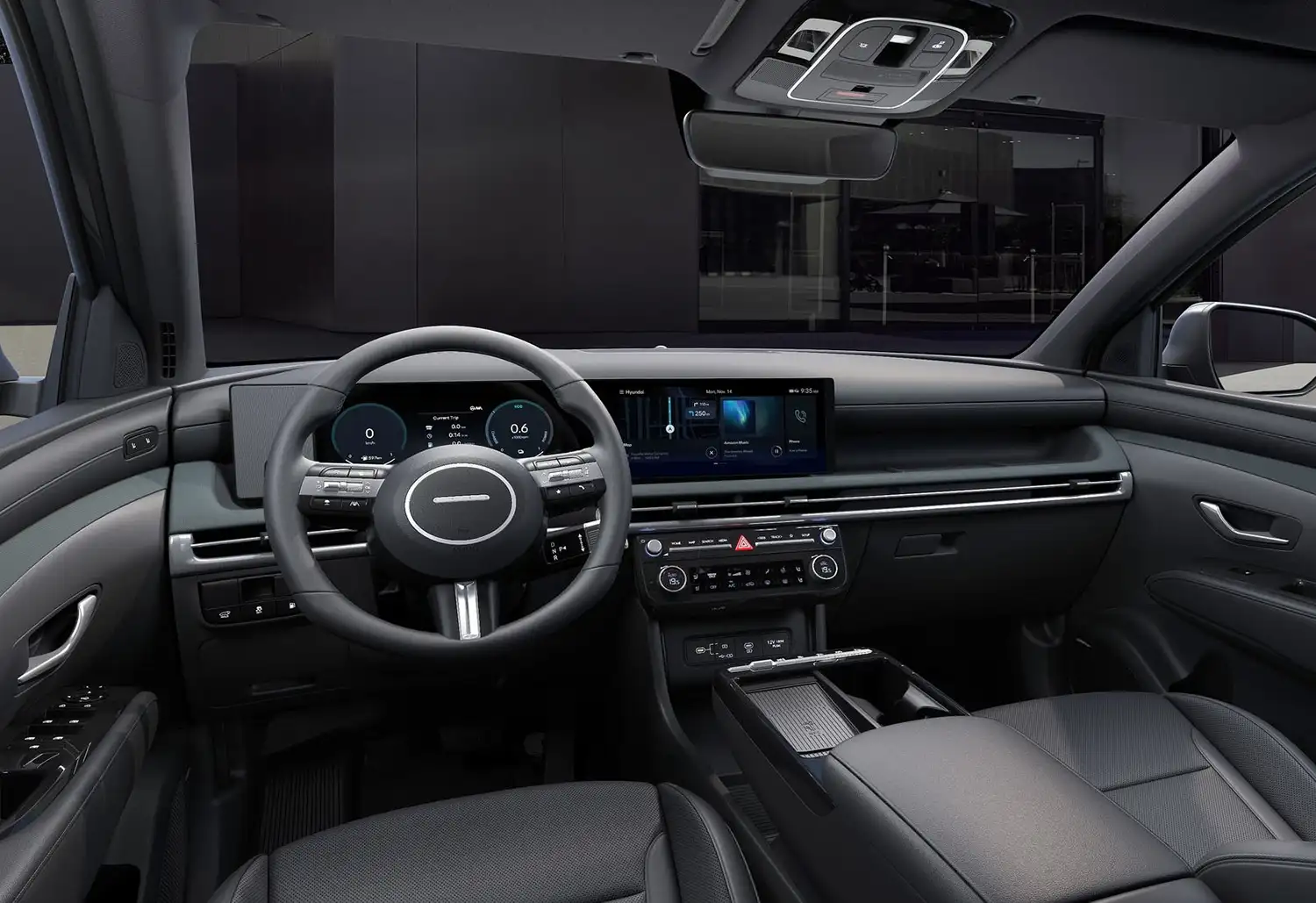
Refined options for greener mobility
Strategically catering to various preferences and environmental concerns, the updated Hyundai Tucson is available as an internal combustion engine vehicle, a mild hybrid, a pure hybrid, and a plug-in hybrid. One notable addition to the Tucson line-up is the introduction of the two-wheel-drive plug-in hybrid variant, a move that reflects Hyundai’s commitment to expanding its eco-friendly mobility solutions.
To promote more zero-tailpipe-emissions driving, Hyundai has introduced the second generation of Green Zone Driving Mode, a geofencing capability exclusive to the plug-in hybrid variant. This cutting-edge feature enables the variant to seamlessly transition to pure-electric operation upon entering designated low-emission zones or areas with emission restrictions, empowering drivers to enjoy a greener, more sustainable driving experience.
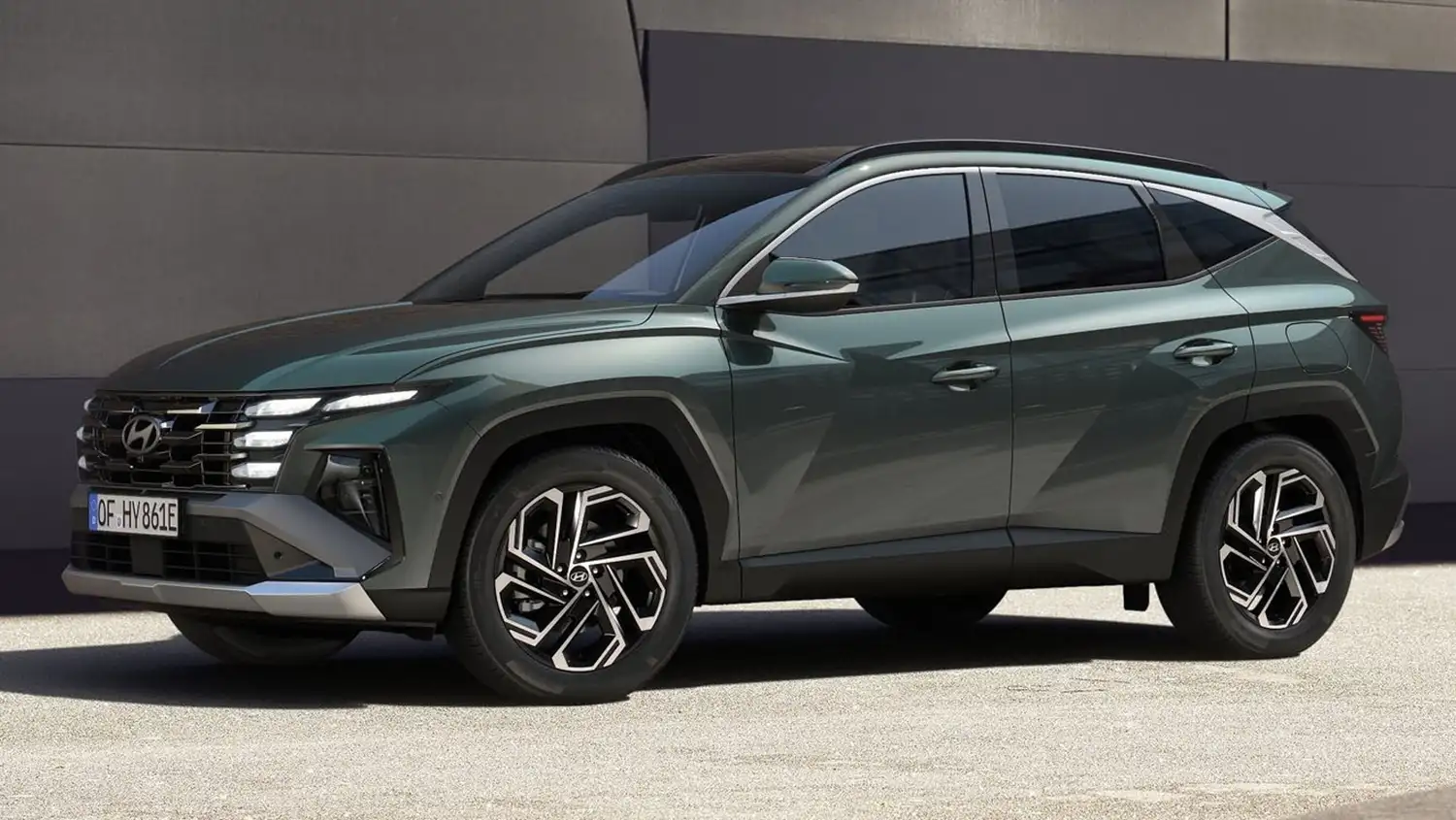
The hybrid and plug-in hybrid variants offer Paddle Regenerative Braking Mode when driving in ECO mode. This allows the driver to adjust the intensity of regenerative braking using paddle shift levers on the steering wheel, providing three levels of deceleration control for enhanced convenience and fuel efficiency.
Tucson is not just a car; it is a testament to Hyundai’s dedication to exceeding customer expectations. With its winning combination of style, technology, and sustainability, Tucson remains the ultimate choice for drivers who yearn for the best.
